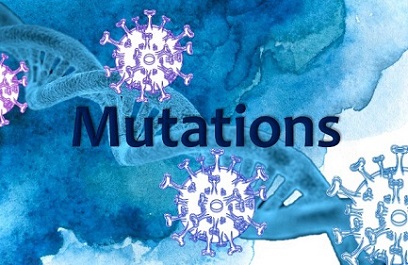BREAKING NEWS! USDA Study Shows Various New Mutations In H5N1 Virus Found In Dairy Cows
Nikhil Prasad Fact checked by:Thailand Medical News Team May 04, 2024 1 year, 7 months, 4 weeks, 1 day, 3 hours, 34 minutes ago
H5N1 News: In recent months, a concerning development has emerged within the dairy farming industry in the United States. A strain of the H5N1 virus, commonly known as bird flu, has been detected in dairy cows across several states, prompting significant attention from health authorities and researchers alike. A comprehensive genetic analysis conducted by the United States Department of Agriculture (USDA) that is covered in this
H5N1 News report, has revealed a series of new mutations within the virus, raising questions about its potential impact on public health and agricultural practices.
 USDA Study Shows Various New Mutations In H5N1 Virus Found In Dairy Cows
The Discovery of New Mutations
USDA Study Shows Various New Mutations In H5N1 Virus Found In Dairy Cows
The Discovery of New Mutations
The USDA study uncovered a total of 491 amino acid sites with nonsynonymous changes in the H5N1 virus strains infecting the dairy cows in the United States. Among these changes, 309 mutations were identified at sites associated with functional alterations, indicating a substantial level of genetic variation within the virus population.
Notably, several of these mutations were linked to changes in pathogenicity, virulence, host range specificity, and mammalian adaptation, suggesting an evolving landscape of viral characteristics.
Notably, variants affecting pathogenicity in key virus components like HA, MP, NP, and PB2 were detected, such as an increase in Q154R and S207G, a decrease in V105M, and an increase in D701N. Furthermore, mutations linked to increased virulence (Q134K/R, V67I, E627K) and host-range specificity (A55T, E57G, N71S, E229K) were also identified.
Of particular concern were variants in PB2 associated with mammalian adaptation, with E627K, M631L, and D701N showing high frequencies, especially M631L detected in 99% of 214 cattle. However, the critical mammal adaptation mutation PB2 271A was notably absent, except for one sample. Additionally, mutations affecting receptor binding affinity were observed in HA, adding another layer of complexity to the virus's behavior.
These findings underscore the dynamic nature of the H5N1 virus and its potential to evolve rapidly, posing challenges for containment and control efforts.
Implications for Transmission and Spread
Another key findings of the study was the ability of the H5N1 virus to cross species barriers, with evidence of transmission from wild birds to cattle in the Texas Panhandle. This spillover event was followed by rapid dissemination of the virus within dairy farms across multiple states, including Texas, Kansas, Michigan, and New Mexico. The movement of asymptomatic cattle played a crucial role in facilitating the spread of the virus, highlighting the challenges in containing and controlling such outbreaks within livestock populations.
Risk Factors and Concerns
While none of the identified mutations individually posed an immediate cause for alarm, the cumulative effect of these genetic changes raised concerns among experts. Of particular worry is the potential for the vi
rus to evolve in ways that enhance its ability to spread between species, including humans. The study emphasized the need for ongoing surveillance and monitoring to track the prevalence of these mutations and assess their impact on public health.
Timeline and Epidemiological Insights
The timeline of the outbreak, as revealed by genetic analyses, indicated that the virus had been circulating in cattle for several months before formal confirmation by regulatory authorities. This period of undetected transmission underscored the challenges in early detection and containment of emerging infectious diseases within livestock populations. The study also highlighted instances of interspecies transmission, with the virus spreading from cattle back to wild birds, poultry, domestic cats, and even a raccoon.
Surveillance and Preventive Measures
In response to the findings, researchers and health officials stressed the importance of enhanced surveillance measures, not only on affected farms but also across the broader agricultural landscape. Large-scale monitoring efforts were recommended to track the movement of the virus, identify potential hotspots of infection, and implement targeted control strategies. Additionally, the study advocated for continuous assessment of antiviral drug efficacy against the evolving viral strains.
Public Health Implications
The emergence of new mutations in the H5N1 virus within dairy cows raised significant public health concerns. While the virus had primarily affected livestock, there were fears of potential spillover into human populations, especially given the observed mutations associated with increased mammalian adaptation. The study highlighted the need for vigilance and preparedness in dealing with zoonotic threats, emphasizing the importance of early detection, rapid response protocols, and effective communication channels between veterinary and public health agencies.
Future Research Directions
Looking ahead, the study called for further research into the pathobiology and evolution of the virus within dairy cattle. Understanding the mechanisms driving viral transmission, host adaptation, and genetic variability would be crucial in devising targeted interventions and preventive measures. Moreover, ongoing surveillance efforts would be essential in assessing the evolving risk landscape and informing evidence-based strategies for mitigating the spread of zoonotic diseases.
Conclusion
The USDA study shed light on the complex dynamics of the H5N1 virus outbreak in dairy cows, unveiling a landscape of genetic mutations that could impact its transmission, virulence, and potential for interspecies spread. While the immediate risk to human health remained relatively low, the findings underscored the need for proactive monitoring, robust surveillance systems, and collaborative efforts across sectors to address emerging infectious threats in both animal and human populations.
The study findings were published on a preprint server and are currently being peer reviewed.
https://www.biorxiv.org/content/10.1101/2024.05.01.591751v1
For the latest
H5N1 News, keep on logging to Thailand Medical News.
